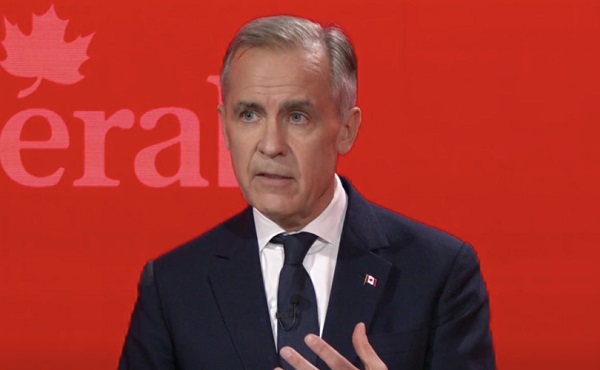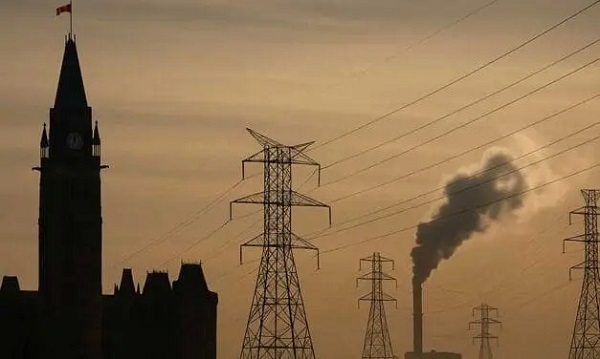Energy
Is the Carney Government Prepared to Negotiate a Fair Deal for the Oil, Gas and Pipeline Sectors

By Jim Warren
Call me a cockeyed optimist but before giving up entirely on the country or selling our energy shares we might want to wait a while to see what a Carney led government actually does.
That being said, lowering the collective blood pressure on the prairies will require answers to some key questions.
Is Mark Carney serious about getting more oil and gas to Canadian tidewater? Does Carney really think this can be done without altering Bill C-69 and ditching the tanker ban, Bill C-48? Is he actually going to leave the emissions cap on oil production, the industrial carbon tax and the clean electricity standard in place, or is he planning to pleasantly surprise us?
Notwithstanding Carney’s penchant for resumé inflation he appears to be a reasonably intelligent guy and a shrewd investor, who understands how national economies work. Assuming this is the case, Carney’s pledge to get more oil and gas exported to customers besides the US may not have been an insincere sop to voters in the West. If so, is he still naïve enough to think pipelines can be built without dismantling the barriers put up by the Trudeau Liberals to block development and stifle growth in the oil and gas sector?
Were his platitudes about zealously protecting the environment and drastically cutting emissions simply an effort to appease the left wing of the Liberals’ electoral base? Will he accept that the radical green agenda outlined in his 600 hundred page door stopper book needs to be put on the back burner during these economically challenging times?
It seems reasonable to imagine Carney was loathe to make too nice with the oil and gas industry prior to the election lest he alienate the Liberal caucus members whose support he needed to win the party’s leadership. Similarly, keeping some of the Liberals’ most radical environmentalists such as Steven Guilbeault out of cabinet could have caused unnecessary embarrassment and friction within the party during the actual election campaign.
Now that he has produced an election win that was nowhere in sight before he became the front runner for the Liberal leadership, Carney is relatively unassailable. True, he can’t be so exceedingly arrogant and dictatorial that he inspires caucus members to cross the floor of the Commons. What is more likely is that those members of the Liberal caucus with the capacity to face reality understand they were headed for political oblivion before Carney came to the rescue. It was he, not them, who secured the victory. They owe him their political lives. This provides Carney with considerable freedom of action when it comes to setting the policy agenda.
He can do some of the things he said he wouldn’t do and refrain from doing others he said he would do. For the Liberals’ communications professionals, explaining why Carney changed his positions from the wrong side of the oil, gas and pipeline debates to the right side should be nowhere near as challenging as the 24/7 turd polishing they had to do for Justin Trudeau.
Yes, the Carney government is currently enjoying its honeymoon period. For a brief while the Liberals get to feel like they are ten feet tall and politically bullet-proof. While his caucus is guzzling champagne and dividing the spoils Carney has the opportunity to plot the policy trajectory of his government.
If Mark Carney really is even half as smart as advertised he knows how important a thriving oil and gas sector (provided with new export pipelines) is to Canada during this time of geopolitical uncertainty and international economic turmoil. Our new prime minister might also appreciate now is not the time to impose inflationary environmental protection and green transition initiatives on the country.
This is not to say Carney ‘deserves a chance’ to show us what he can do. He’s not some sad little fellow whose been warming the bench on a kiddies soccer team hoping for a chance to play. When Mr. Carney entered the game his campaign assured us he is an internationally acclaimed economic wizard capable of running large and important organizations. Now he needs to walk the talk—it’s his job after all.
The point is, there needs to be a long enough pause in East-West political hostilities to see if meaningful cooperation is possible. Should they choose to do so, the producing provinces have the ability to make governing the country much more challenging than it is already. But the prudent approach at the moment is to see what the new prime mister is prepared to negotiate before sending the convoys East. We can still hold the prime minister’s feet to the fire without torching the bargaining table.
This doesn’t mean the country can spend a lot of time making key decisions. The producing provinces and their conventional energy industries have endured a nine year Liberal assault on their ability to generate economic growth. The Trudeau government trampled the rights of the provinces to develop and market their resources. Much has been made of the investment stifling effects of the uncertainty created by the Trump administration’s tariff policies. Nine plus years of uncertainty about the future of Canada’s conventional energy sector has similarly discouraged investment.
There is a wide open policy window available to Canada’s oil, gas and pipeline industries just now. The stars are aligned as well as they’ll ever be for repairing the damage done by the Trudeau Liberals. The strategic importance of being able to market our gas and oil into countries besides the US has never been clearer to Canadians. A majority of people from across the country (74%), including 60% of Quebecers currently favour the building of new oil and gas pipelines extending from the prairies to the east and west coasts.
Yes, at this point in time, the glass is actually more than half full when it comes to making public policy beneficial to the conventional energy sector and the producing provinces. Admittedly, it took a couple of days cooling off after the election results came in for me to say this.
Unfortunately, policy windows don’t stay open forever and the West is urgently seeking change. Federal-provincial negotiations on the conventional energy and pipeline files need to start now. And if the parties are truly concerned about optimizing Canada’s economic prospects and fostering national unity we have every right to expect positive results by mid-summer.
Business
Senator wants to torpedo Canada’s oil and gas industry

From the Fraser Institute
Recently, without much fanfare, Senator Rosa Galvez re-pitched a piece of legislation that died on the vine when former prime minister Justin Trudeau prorogued Parliament in January. Her “Climate-Aligned Finance Act” (CAFA), which would basically bring a form of BDS (Boycott, Divestment, and Sanctions) to Canada’s oil and gas sector, would much better be left in its current legislative oblivion.
CAFA would essentially treat Canada’s oil and gas sector like an enemy of the state—a state, in Senator Galvez’ view, where all values are subordinate to greenhouse gas emission control. Think I’m kidding? Per CAFA, alignment with national climate commitments means that everyone engaged in federal investment in “emission intensive activities [read, the entire oil and gas sector] must give precedence to that duty over all other duties and obligations of office, and, for that purpose, ensuring the entity is in alignment with climate commitments is deemed to be a superseding matter of public interest.”
In plain English, CAFA would require anyone involved in federal financing (or federally-regulated financing) of the oil and gas sector to divest their Canadian federal investments in the oil and gas sector. And the government would sanction those who argue against it.
There’s another disturbing component to CAFA—in short, it stacks investment decision-making boards. CAFA requires at least one board member of every federally-regulated financial institution to have “climate expertise.” How is “climate expertise” defined? CAFA says it includes people with experience in climate science, social science, Indgineuous “ways of knowing,” and people who have “acute lived experience related to the physical or economic damages of climate change.” (Stacking advisory boards like this, by the way, is a great way to build public distrust in governmental advisory boards, which, in our post-COVID world, is probably not all that high. Might want to rethink this, senator.)
Clearly, Senator Galvez’ CAFA is draconian public policy dressed up in drab finance-speak camouflage. But here’s what it would do. By making federal investment off-limits to oil and gas companies, it would quickly put negative pressure on investment from both national and international investors, effectively starving the sector for capital. After all, if a company’s activities are anathema to its own federal regulators or investment organs, and are statutorily prohibited from even verbally defending such investments, who in their right minds would want to invest?
And that is the BDS of CAFA. In so many words, it calls on the Canadian federal government to boycott, divest from, and sanction Canada’s oil and gas sector—which powers our country, produces a huge share of our exports, and employs people from coast to coast. Senator Galvez would like to see her Climate-Aligned Finance Act (CAFA) resurrected by the Carney government, whose energy policy to-date has been less than crystal clear. But for the sake of Canadians, it should stay dead.
Energy
Who put the energy illiterate in charge?

This article supplied by Troy Media.
Canada’s energy policy is being shaped by politicians who don’t actually understand how energy works. That’s not just embarrassing. It’s dangerous
Canada’s energy future is being held back by a critical obstacle: our elected officials don’t understand energy.
At all three levels of government, most politicians lack even a basic grasp of how our energy systems function. That ignorance isn’t just a knowledge gap—it’s a leadership crisis. Energy systems are evolving rapidly, and our leaders are ill-equipped to manage the complexity, tradeoffs and consequences involved. With few exceptions, their understanding is superficial, shaped more by talking points than substance.
By “energy systems,” I mean the complex web of technologies, infrastructure, markets and regulations that generate, distribute and manage power—from oil and gas to hydro, nuclear, wind and solar. These systems are deeply interconnected, constantly changing and central to every aspect of modern life. Yet the people making decisions about them often have little idea how they actually work.
This shows up frequently in public life: dodged questions, scripted answers, vague platitudes. Many politicians skate across the surface of issues with the thinnest understanding. The old adage “a little knowledge is a dangerous thing” perfectly describes Canadian energy politics today.
Decisions about energy directly affect household utility bills, climate goals, industrial competitiveness and grid reliability. Yet politicians tend to be tethered to the dominant energy source in their own region—oil and gas in Alberta, hydro in Quebec, nuclear in Ontario—without grasping how those systems connect or conflict. Canada’s energy landscape is fragmented, with each province operating under its own regulatory framework, infrastructure constraints and political pressures. That makes coordination difficult and systems-level thinking essential.
This isn’t a left-versus-right issue. It’s not oil and gas versus renewables. It’s a national failure to understand the integrated systems that power our lives and economy. Canada is, functionally, energy illiterate, and our elected officials reflect that reality. We flip a switch, pump gas, turn up the thermostat and rarely ask how or why it works, or what it costs in environmental or economic terms.
Take the Clean Electricity Regulations as one example. Introduced by the federal government to drive Canada’s electricity grid to net-zero emissions by 2035, the CERs require provinces to sharply reduce or eliminate fossil fuel-based power. But in Alberta and Saskatchewan, where coal and natural gas still dominate, those regulations landed with a thud. The federal government failed to account for regional infrastructure limitations, market structure
differences and technology readiness. The result? Immediate backlash, legal threats and political gridlock—not because climate action is unwelcome, but because the policy was crafted in a vacuum of systems-level understanding.
Adding to the problem is the dominance of bureaucrats and political handlers in shaping what passes for energy messaging. Speeches are often a patchwork of statistics and sanitized clichés, stripped of nuance or depth. Many politicians simply deliver what they’re handed, guided more by risk management than insight. The result is policy that’s disconnected from the realities it aims to change.
A handful of elected officials do have real-world energy experience, but even that is often narrow, based on one role or one sector. It rarely translates into the kind of broad, integrated knowledge needed to lead across multiple interdependent systems. The risks of this fragmented thinking are immense.
What’s needed is mandatory education—an energy information and insights toolkit for anyone seeking public office. This shared curriculum would cover how electricity and fuel systems work, the economics of energy markets, climate dynamics, environmental trade-offs and public policy principles. It should be grounded in both natural and social sciences and structured to develop systems thinking, so that decisions are informed by how energy technologies, markets and governance truly interact.
Imagine if thousands of politicians—urban and rural, left and right, federal and local—learned from the same textbook. Politics wouldn’t vanish. Disagreements wouldn’t disappear. But the debate would shift from tribal talking points to informed discussion.
And for once, Canada might start moving forward on energy, not with noise or paralysis, but with purpose.
Bill Whitelaw is a director and advisor to many industry boards, including the Canadian Society for Evolving Energy, which he chairs. He speaks and comments frequently on the subjects of social licence, innovation and technology, and energy supply networks.
Troy Media empowers Canadian community news outlets by providing independent, insightful analysis and commentary. Our mission is to support local media in helping Canadians stay informed and engaged by delivering reliable content that strengthens community connections and deepens understanding across the country.
-

 Alberta2 days ago
Alberta2 days agoCentral Alberta MP resigns to give Conservative leader Pierre Poilievre a chance to regain a seat in Parliament
-

 Alberta2 days ago
Alberta2 days agoCalls for a new pipeline to the coast are only getting louder
-

 Daily Caller16 hours ago
Daily Caller16 hours agoUnanimous Supreme Court Ruling Inspires Hope For Future Energy Project Permitting
-

 Alberta1 day ago
Alberta1 day agoUnified message for Ottawa: Premier Danielle Smith and Premier Scott Moe call for change to federal policies
-

 Alberta2 days ago
Alberta2 days agoAlberta pro-life group says health officials admit many babies are left to die after failed abortions
-

 Daily Caller2 days ago
Daily Caller2 days ago‘Not Held Hostage Anymore’: Economist Explains How America Benefits If Trump Gets Oil And Gas Expansion
-

 Censorship Industrial Complex1 day ago
Censorship Industrial Complex1 day agoJordan Peterson reveals DEI ‘expert’ serving as his ‘re-education coach’ for opposing LGBT agenda
-

 Business2 days ago
Business2 days agoRhetoric—not evidence—continues to dominate climate debate and policy




